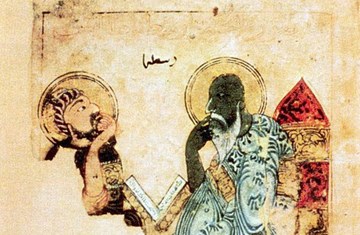Bibliography
Primary sources
‘Ala’ al-Din Joveyni,��Ta’rikh-e jahan goshay,��ed. Muhammad Qazvini, Leiden, 1912-37, III, pp. 225-39; tr. John A. Boyle, Manchester, II, pp. 688-97.
Abu’l-Qasim ‘Abd-Allah b. ‘Ali Kashani,��Zubdat al-tawarikh: bakhsh-e Fatimian wa Nizarian, ed. Muhammad-Taqi Danishpazhuh, 2nd ed., Tehran, 1366 Sh./1987, pp. 199-208.
Abu Eshaq Quhistani,��Haft��bab, ed. and tr. Wladimir Ivanow, Bombay, 1959, text: pp. 19, 24, 38-44, 46-47, 53, 58, 65; translation: pp. 19, 23, 38-44, 46-47, 53-54, 58, 65.
Rashid-al-Din Fadl-Allah,��Jami‘ al-tawarikh: qismat-e Esma‘ilian, ed. Muhammad-Taqi Danishpazhuh and M. Mudarrisi-Zanjani, Tehran, 1338 Sh./1959, pp. 162-70.
Anon.,��Haft bab-e Baba Sayyedna, in��Two Early �������Ͽ�����¼ Treatises, ed. Wladimir Ivanow, Bombay, 1933, pp. 4-44.
Secondary sources
Henry Corbin, “Huitième centenaire d’Alamut,”��Mercure de France, February, 1965, pp. 285-304.
— —,��Cyclical Time and Ismaili Gnosis, London, 1983, pp. 47-58, 97, 117, 155-56.
Farhad Daftary,��The Isma‘ilis: Their History and Doctrines, Cambridge, 1990, pp. 385-92, 400-402, 408, 410-11, 415.
— —, “Persian Historiography of the Early Nizari Isma‘ilis,”��Iran��30, 1992, pp. 91-97.
— —,��The Assassin Legends: Myths of the Isma‘ilis, London, 1994, pp. 40-41, 42, 78-79, 99, 145-46, 178.
Marshall G. S. Hodgson,��The Order of Assassins, The Hague, 1955, pp. 148-59, 279-324 (containing the Eng. tr. of the anonymous��Haft bab-e Baba Sayyedna).
Christian Jambet,��La grande résurrection d’Alamut, Lagrasse, 1990, especially pp. 35-73, 95-135, 295 ff.
Ismail K. Poonawala,��Biobibliography of Isma‘ili Literature, Malibu, Calif., 1977, pp. 257-58.











